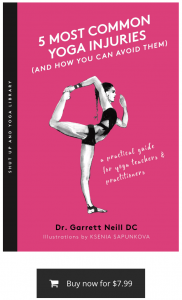Sutra 2.46: The posture you choose for meditation should be steady and comfortable.
Sutra. 2.47: You can find steadiness in your posture by relaxing the effort required to sustain it. You can find comfort and ease in your posture by focusing on the infinite.
Ask a random person on the street, “What is yoga?” and you’re likely to receive an answer that describes the performance of physical postures. In our Western understanding, the performance of postures is synonymous with asana, the third limb of the 8 limbs of yoga outlined in the Yoga Sutra.
Although the Yoga Sutra is commonly cited as one of the primary source texts for yoga, of the almost 200 sutras, only two mention the word asana.
And in that context, asana doesn’t even mean posture.
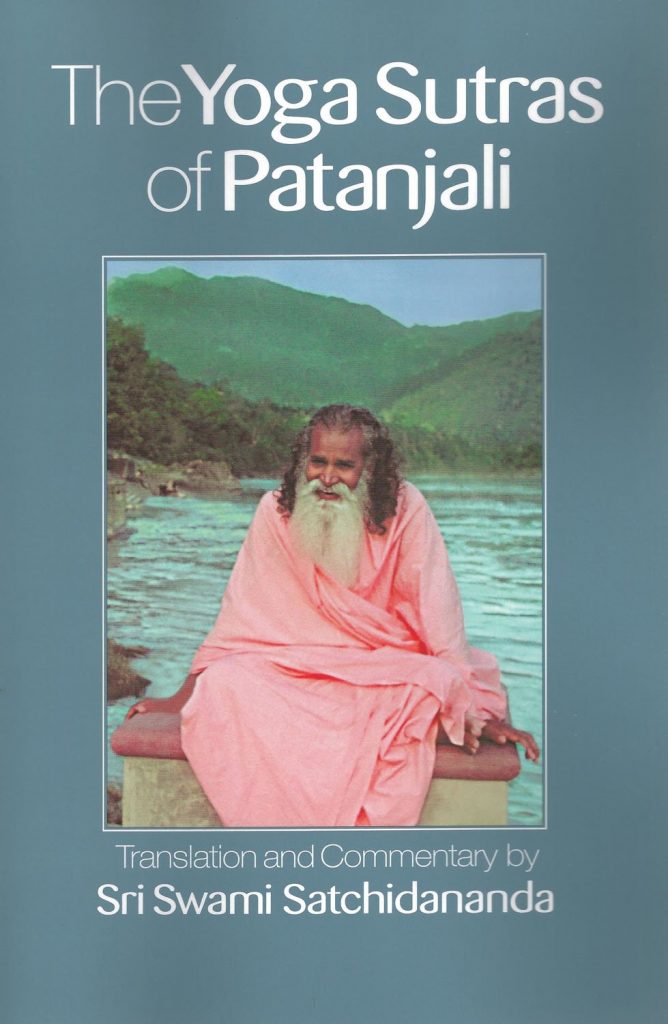
The author of the Yoga Sutra, Patanjali, defines yoga as many things; however, he mainly considers yoga a mental process that involves refining the mind through practices such as meditation and breathing.
One could argue that using the Yoga Sutra as a foundation for the practice of physical postures is absurd since Patanjali doesn’t describe the performance of physical postures in his text. And yet, it is through the application of Patanjali’s ideas about asana to modern postural practices (even though he’s talking about something totally different than Downward Facing Dog) that modern yoga practitioners can advance their yoga practice.
Defining Asana
First things first: let’s define asana.
According to Sir M. Monier-Williams’ A Sanskrit-English Dictionary, asana has many potential definitions, including:
- Sitting down
- Abiding
- Dwelling
- Seat
- Place
Asana is about sitting down and taking your seat (as in meditation). It is about abiding in a headspace that allows you to refine your mental faculties and concentrate. It is about finding that particular place in your mind that allows you to focus without interruption. It is about dwelling in that focused state over longer and longer periods of time.
Asana is a mindset.
When performing physical postures, the yoga pose becomes yoga asana when you find your seat. When you can dwell or abide in a posture while integrating the breath with focused awareness, suddenly yoga posture becomes more than just performing a pose for its aesthetics. Yoga asana is an exploration of the interrelated effects of the physical on the energetic, the energetic on the physical; the physical on the mental, the mental on the physical; the energetic on the mental, the mental on the energetic; and so on.
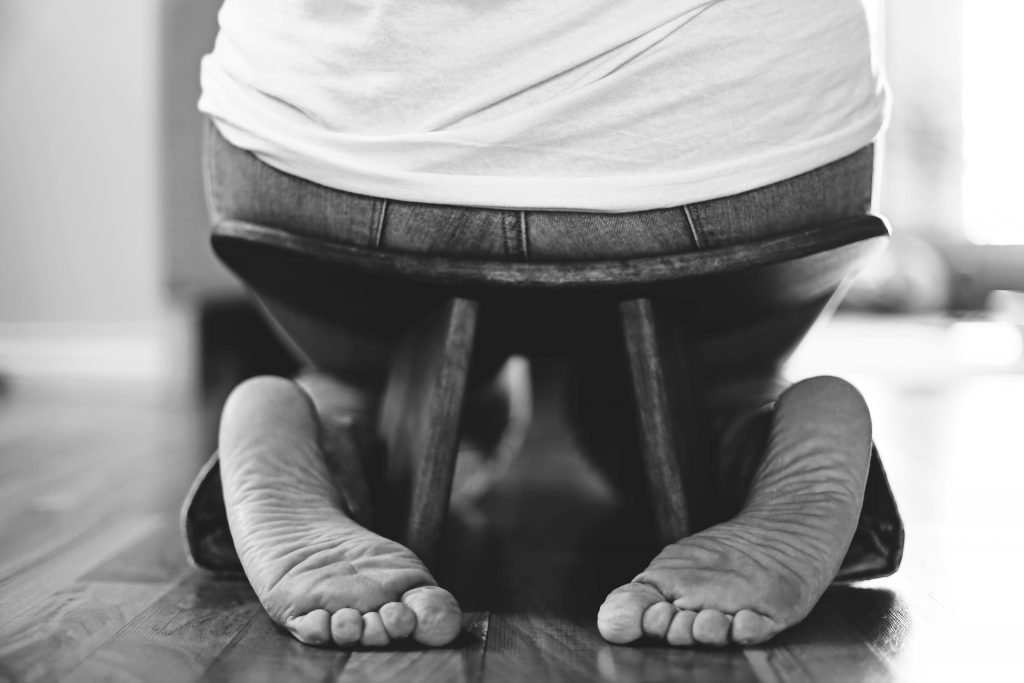
In this way, Asana is inherently about alignment. Not the alignment of muscles and bones, as is commonly referred to in modern asana practice, but rather, the alignment of the physical, energetic, and mental layers of the body.
Taking your seat in a posture is about aligning body, breath, and mind. Getting to the place where one can align all three requires proper body alignment. But getting the body into its proper place is a prerequisite for asana, not the purpose of asana.
Asana does not mean posture. But it does refer to how one chooses to be in any chosen posture. Practicing asana means you are practicing finding and dwelling in your seat. To “sit” (dwell, abide) in handstand or Downdog or Warrior 2 is a powerful experience. The next time you find yourself in a yoga posture, take some time to explore your experience in the posture with all your senses before moving onto the next one.
Start with a strong foundation
Now that we’ve established what asana means, we can look a little closer at the two sutras Patanjali dedicates to the term. In Sutra 2.46, Patanjali states that one aims for practicing asana in a steady and comfortable manner.
The Sanskrit words Patanjali uses are sthira and sukha.
Some potential definitions for sthira include:
- Firm
- Solid
- Strong
- Still
- Calm
- Steady
In our asana practice, it is important that postures are practiced with a solid foundation. Postures are to be practiced with calm strength and firmness that allows the effort of the body to be used in a balanced way. From a purely physical perspective, this is functional fitness at its finest.
At first, it might seem that the words calm and strong don’t belong in the same grouping, but it is their presence together that makes sthira sthira. Effort can easily be overdone. Balanced effort is what Patanjali wants you to practice.
You can practice cultivating a calm strength in Warrior 2, a posture that invites a quality of fierceness. Once you have settled into your Warrior 2, assess your physical foundation. Notice how your feet interact with the mat. Release any gripping from your toes without losing your balance. Explore how strong your legs feel and make minor adjustments in muscular engagement all the way up your legs to find your own sense of balanced effort.
Notice how much effort is present in your shoulders and arms. Close your eyes, take a deep breath, and see if you can soften some of that effort without losing the position of your arms. Connect with a sense of effort that is firm and strong but not so strong that it invites more tension.
Invite ease
Asana is not just about effort. The cultivation of ease in a posture (or in life, for that matter) is equally important.
The Sanskrit word sukha can mean:
- Running swiftly or easily
- Pleasant
- Agreeable
- Gentle
- Mild
- Comfortable
- Happy
- Ease
- Pleasure
- Joy
- Delight
When practicing a physical posture there will always be some degree of effort; however, the effort needs to be tempered such that there is still room for the experience of comfort, joy, and pleasure. Working to the point of pain is not asana. Expending effort to the point of discomfort is not necessary. That’s not to say that discomfort doesn’t have a place in the yoga practice, just that it’s not necessary to create it for ourselves in asana practice.
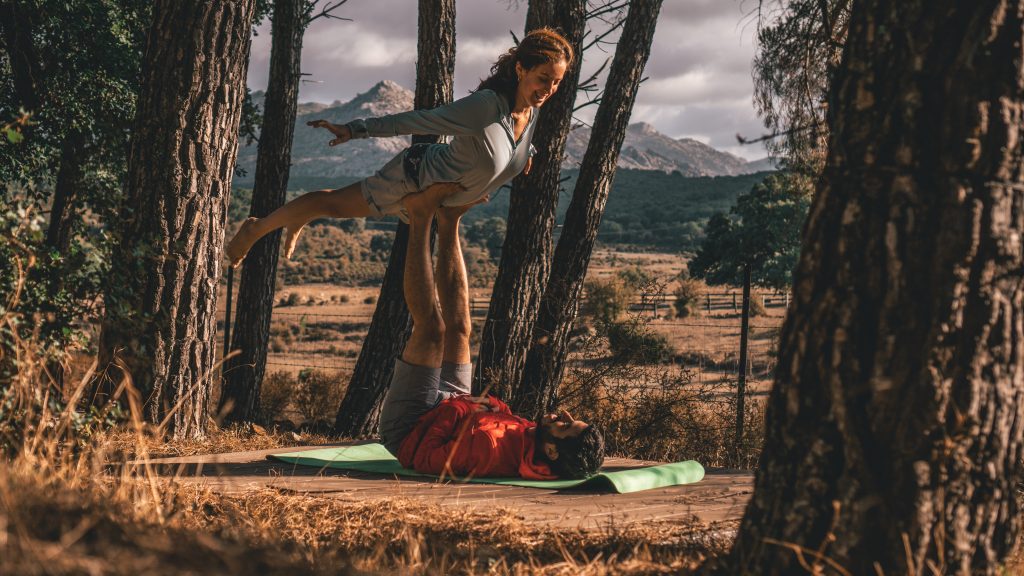
Applying these principles of sthira and sukha to a physical posture practice can alter a yoga practice completely. Finding the balance between sthira and sukha (effort and ease or steadiness and comfort), is a practice in refinement. It is the application of these principles that helps a person advance his or her yoga practice beyond the physical.
One of the best ways to relax into and refine any posture is to practice Dirga breath. Take long inhales expanding into your belly, rib-cage, and chest and exhale fully. This simple, intentional addition can instantly transform a pose into asana and will give you extra time to take your seat.
Relax to progress
In case you were wondering how to cultivate balanced effort or find comfort, Patanjali gives some guidance in Sutra 2.47.
Sutra. 2.47: You can find steadiness in your posture by relaxing the effort required to sustain it. You can find comfort and ease in your posture by focusing on the infinite.
Asana is an endurance practice, rather than a sprint to the end of class.
Steadiness (sthira) is found not by creating more work or exerting more effort, but by relaxing the effort required to sustain it. Patanjali is encouraging the development of sustainable meditation practice in this Sutra. Sustainability is important in our modern asana practice too. Ceaseless effort consistently applied leads to burn-out and injury. A softening of effort leads to advancement in knowledge and understanding. To the Western mind predisposed to achievement, this idea can be hard to wrap our minds around.
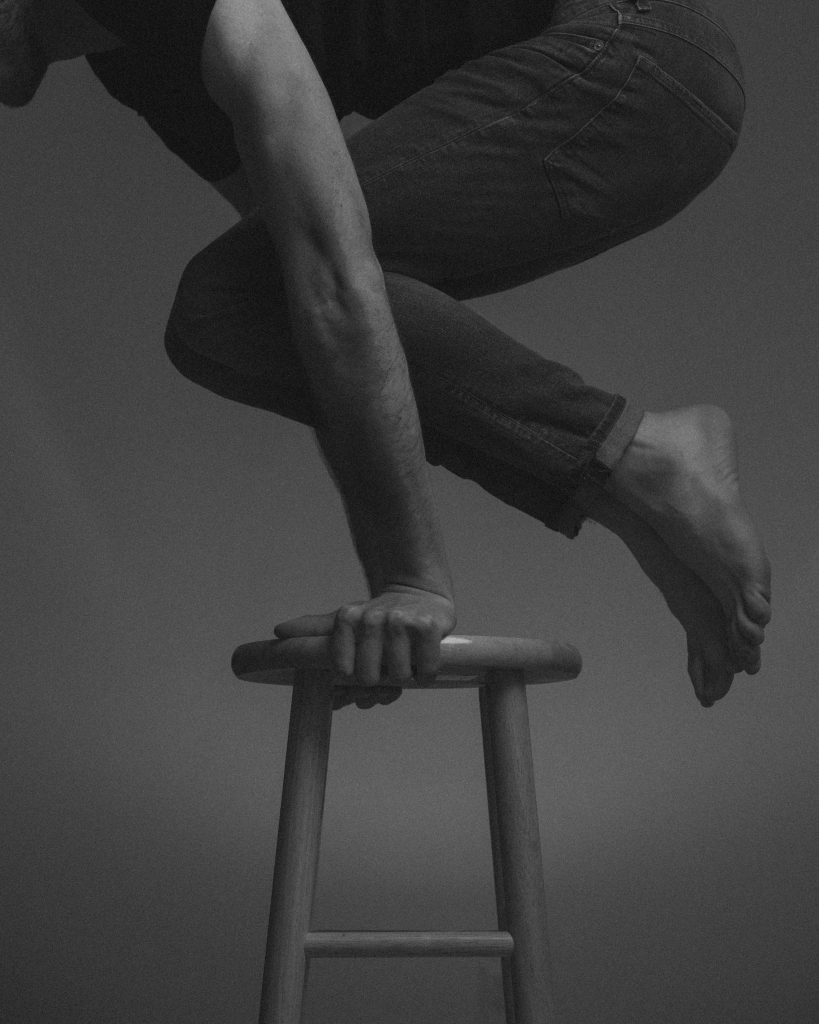
You can experience this softening of effort by exploring Plank pose. There is undoubtedly effort required to hold a Plank pose, and the effort becomes greater the longer you hold the pose. To cultivate sthira and sukha in this pose, consider playing with the amount of effort required to hold the pose safely—you want to have enough muscular effort to protect your back but still have enough space to take full breaths into the rib cage and belly.
Start with your knees on the ground in your Plank pose. Engage your core muscles by gently hugging in your side, front, and back muscles in your torso. Continue to hug in those muscles while taking a deep breath so that you can feel some expansion in the rib cage. This will require you to play with the amount of muscular engagement necessary to both support your spine and allow you to still breathe. If you are unfamiliar with how to feel your breath in your ribcage, start playing with this from a seated or lying down position first.
Once you find this balance between effort and ease in your own body, try Plank pose with your knees lifted. To continue advancing this practice, choose postures that are more and more challenging for you, ensuring that you are both engaging and breathing at the same time. This whole process requires deep inner focus as you get more familiar with subtle sensations of muscular engagement, breath expansion, and mental focus.
Comfort and ease (sukha) are found by focusing on the infinite. This is perhaps the most esoteric of Patanjali’s discourses on asana. In relation to meditation practice, focusing on the infinite stands in contrast to focusing on one single object. To understand this idea, it’s best to experience it.
Try focusing on one specific point (a spot on the wall, floor, or ceiling will do). Try to maintain that focus for one minute. It takes a lot of intense effort to focus all your attention and awareness on one point.
Now, try softening your gaze so that you are aware of everything around you all at once. In this gaze, no one point gets any more attention than any other point. Expanding your awareness, while perhaps equally, if not more, challenging, requires less intensity (but not less effort) than focused awareness on one point.

Applied to an experience in a posture-based practice, expanding your awareness beyond the physical attributes of the posture itself opens up the opportunity to experience the flow of energy in a new way. With expanded awareness, you start to notice the effect your thoughts have on your ability to maintain steadiness and ease. You can easily try this in a balancing pose like Tree. Focus on one point in front of you to help you balance, but then soften the gaze and notice more than just your body performing the pose. If you choose a spot on the wall as your initial focus point, expand your gaze to become aware of the whole wall, the ceiling, the other walls, and the shapes of other furniture, people, or objects in the room. Notice how your breath expands beyond just your chest, ribs, or belly. This expanded awareness may challenge your balance even more initially, but over time it will help you enhance your ability to focus and balance better. Upon experiencing your flows of energy and thought patterns and how these functions affect your posture, you begin a new exploration into a more subtle, integrated “seat.”
Integrate
Asana practice is an integrated practice that brings together the experience of the physical, energetic, and mental components of a human being. Asana practice can be Downdog or Handstand or Warrior 2; but Downdog is more than just shoulders and hamstrings, a handstand is more than just core work and balance, and Warrior 2 is more than just standing and breathing.

Asana practice does not need to look fancy to be complex. In fact, there is quite a lot of complexity available in what looks simple. Complexity and progression in asana practice come from the refinement of the subtle practice, which comes about upon a shift in perspective surrounding what asana really means.
This is why yoga never gets old. This is why no two Downdogs are ever the same and why you’ll get something different on your mat every day, even if you do the same postures.
Next time you get on the mat, ask yourself, are you practicing postures? Or are you practicing asana?
*All Sutra translations offered are Ashley Zuberi’s own interpretations based on the English Sutra translations from 10+ translators. Those translators include: T.K.V. Desikachar, Usharbudh Arya, Alice Bailey, M.N. Dvivedi, Georg Feuerstein, Vyaas Houston, Swami Jnaneshvara, Swami Prabhavananda, Shree Purohit Swami, Swami Satchidananda, Alistair Shearer, I.K. Taimni, and Swami Vivekananda.
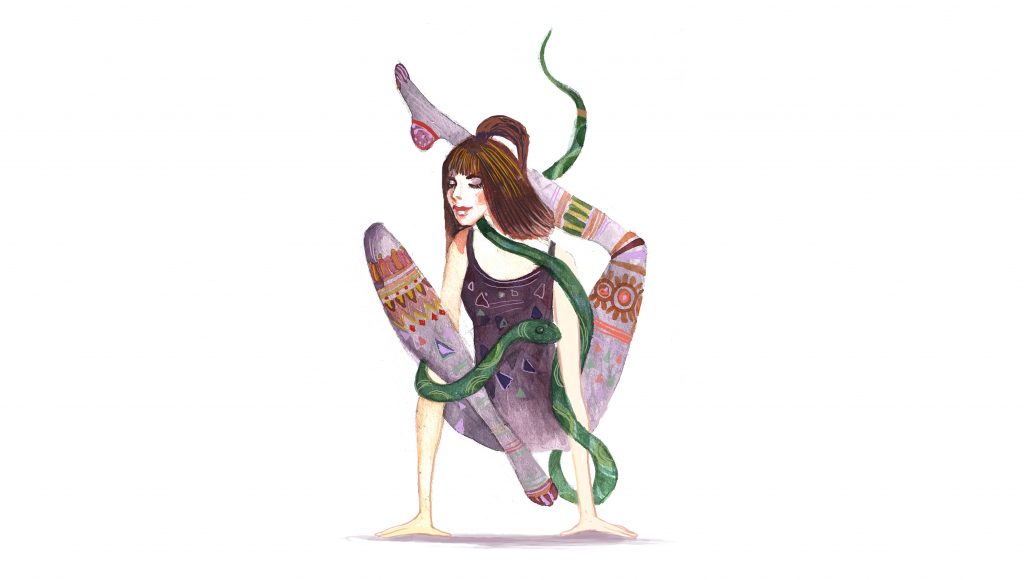
Illustration by Ksenia Sapunkova
Edited by Sarah Dittmore



